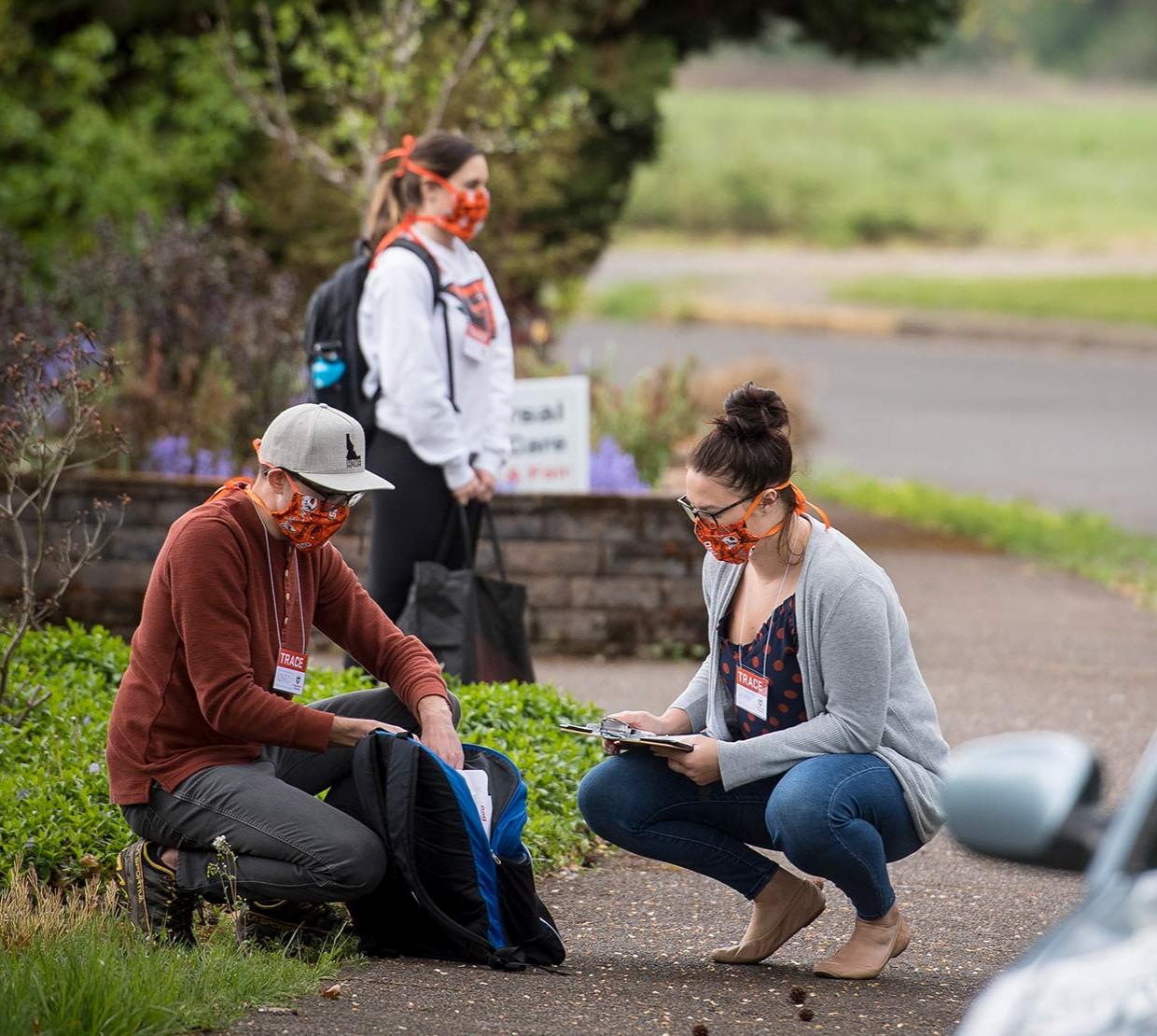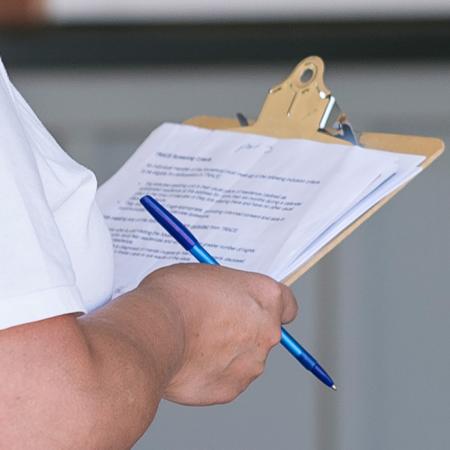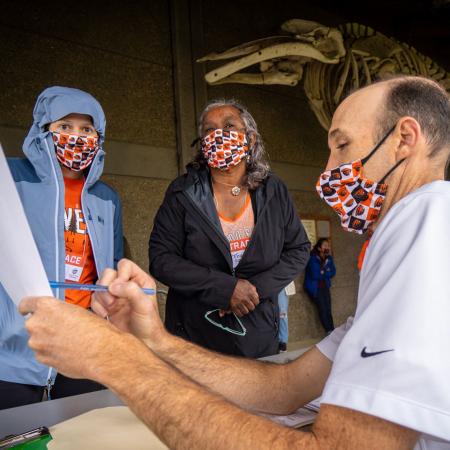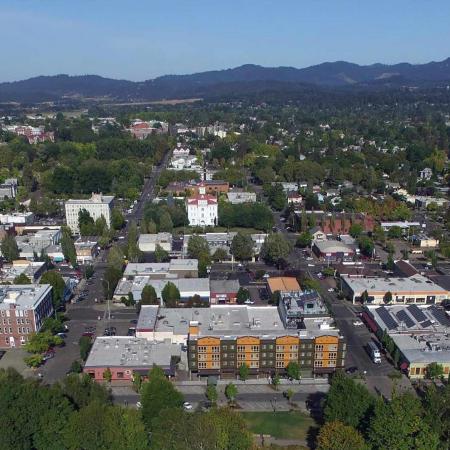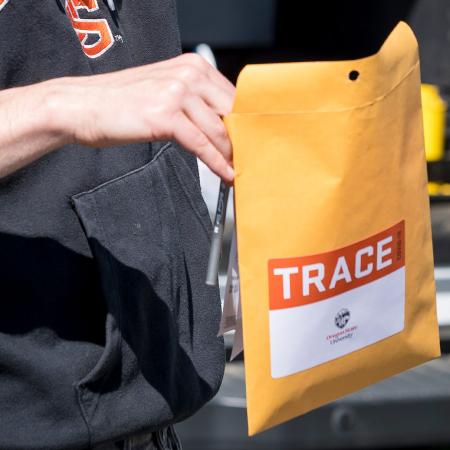Switch to: English
CORVALLIS, Ore. – Oregon State University will conduct its fourth round of door-to-door sampling in Corvallis for the novel coronavirus that causes COVID-19 on June 13-14, roughly one month after the easing of stay-at-home restrictions.
The study, Team-based Rapid Assessment of Community-Level Coronavirus Epidemics, known as TRACE-COVID-19, began the weekend of April 25-26 and continued the subsequent two weekends.
The fourth weekend of sampling had originally been scheduled for May 16-17 but was rescheduled by TRACE leaders to help determine if phase one reopening by Benton County and relaxing of stay-at-home orders led to a change in the prevalence of the virus in the Corvallis community.
“The first three weeks of OSU’s sampling for the virus in Corvallis presented a consistent pattern of low prevalence in the community,” said Ben Dalziel, an assistant professor in OSU’s College of Science and the project leader. “Over three consecutive weeks, the prevalence ranged from approximately one to two in 1,000. Those results suggest that stay-at-home policies indeed flattened the curve as intended. The number of confirmed cases reported by the Benton County Health Department portrayed a similar picture.”
Corvallis’ population is 58,641, comprising more than half of the 93,053 people who live in Benton County.
“Benton County Health Department is extremely fortunate have OSU’s energetic and inspired researchers as our partners,” said Charlie Fautin, the department’s interim co-director. “This study provides unique information about how the virus is moving through the population, which adds a new dimension to the numbers we get from hospitals and medical clinics. Few other local health departments – especially small ones like ours – have access to this sort of real-time community testing data.”
In announcing weekly prevalence results, the TRACE team follows reporting policies used by the Oregon Health Authority and local health departments by not announcing numbers of positive cases between one and nine. Doing so may contribute to identifying an actual community member who tested positive, Dalziel said.
TRACE expanded to Bend on May 30-31 with funding from PacificSource Health Plans, which will also help pay for the upcoming weekend of sampling in Corvallis. Also in Bend on May 30-31, a research project led by the OSU College of Engineering, Coronavirus Sewer Surveillance, collected sewage samples that will be analyzed for the prevalence of genetic material from the virus.
Sewer surveillance will take place in Corvallis as well the weekend of June 13-14.
While one case in 1,000 in Corvallis’ sampling may seem like a low number, it still represents a threat in the absence of a vaccine, said Jeff Bethel, an associate professor in OSU’s College of Public Health and Human Sciences and part of the TRACE leadership team.
“It is important that everyone continue to follow the advice of public health officials regarding face masks, hand washing and other sanitizing methods, and social distancing,” Bethel said. “All evidence suggests that SARS-CoV-2, the virus causing COVID-19, is highly contagious. The larger the gathering, the greater the likelihood that you will encounter an infected individual, regardless of whether they show symptoms.”
The TRACE study is a collaboration of five OSU colleges – Science, Agricultural Sciences, the Carlson College of Veterinary Medicine, Engineering, and Public Health and Human Sciences – in partnership with the Benton County Health Department.
The study was initially funded by OSU and a grant from the David and Lucile Packard Foundation, and has been aided by work from the OSU Foundation and the OSU Alumni Association. The diagnostic testing component of TRACE operates through a partnership between the Oregon Veterinary Diagnostic Laboratory, which is located at OSU, and Willamette Valley Toxicology.
“The first three weeks of data provide a very useful baseline from which we can monitor in close to real time how the prevalence of the virus might have changed as Corvallis began to reopen,” Dalziel said.
At each home visited by TRACE field workers, members of the household are invited to participate in the study. Those who choose to take part are asked to provide information such as their name and date of birth; to fill out a simple consent form; and to answer a few confidential, health-related questions.
Participants are given a nasal-swab test kit that they administer to themselves inside their home and their minor children if they want them to take part. The field staff wait outside, and the participants leave the completed test kits outside their front door. Field staff maintain a safe distance at all times and do not enter anyone’s home. The safety of participants and TRACE field staff is a key part of the study’s research design, Bethel said.
The tests used in TRACE-COVID-19 collect material from the entrance of the nose and are more comfortable and less invasive than the tests that collect secretions from the throat and the back of the nose.
The field workers leave participants with information about the project and how they will receive their results – available in seven to 10 days – as well as health guidance from the Benton County Health Department and the Centers for Disease Control and Prevention. Participants in the study are sent their results and those of their minor children by secure email with receipt by standard mail delivery as a backup. Everyone’s personal information is safeguarded.
“It’s important to remember that COVID-19 is still with us, but prior TRACE-COVID-19 sampling indicated that Benton County communities were successful in limiting spread at that time,” Fautin said. “Our hope is that the information from this round of testing, and future efforts being proposed by OSU, will provide the information our communities need to continue to reduce the impacts of this ongoing pandemic.”
For more information TRACE, visit the TRACE-COVID-19 website. The site includes a list of frequently asked questions.
COVID-19, first reported to the World Health Organization on Dec. 31, 2019, has been confirmed in more than 7 million people worldwide and has killed more than 400,000 people. In the United States, there have been nearly 2 million reported cases – including nearly 5,000 in Oregon – and more than 110,000 deaths nationwide. Benton County has had 60 confirmed cases and five deaths.
This story was originally posted by the Oregon State University newsroom.
